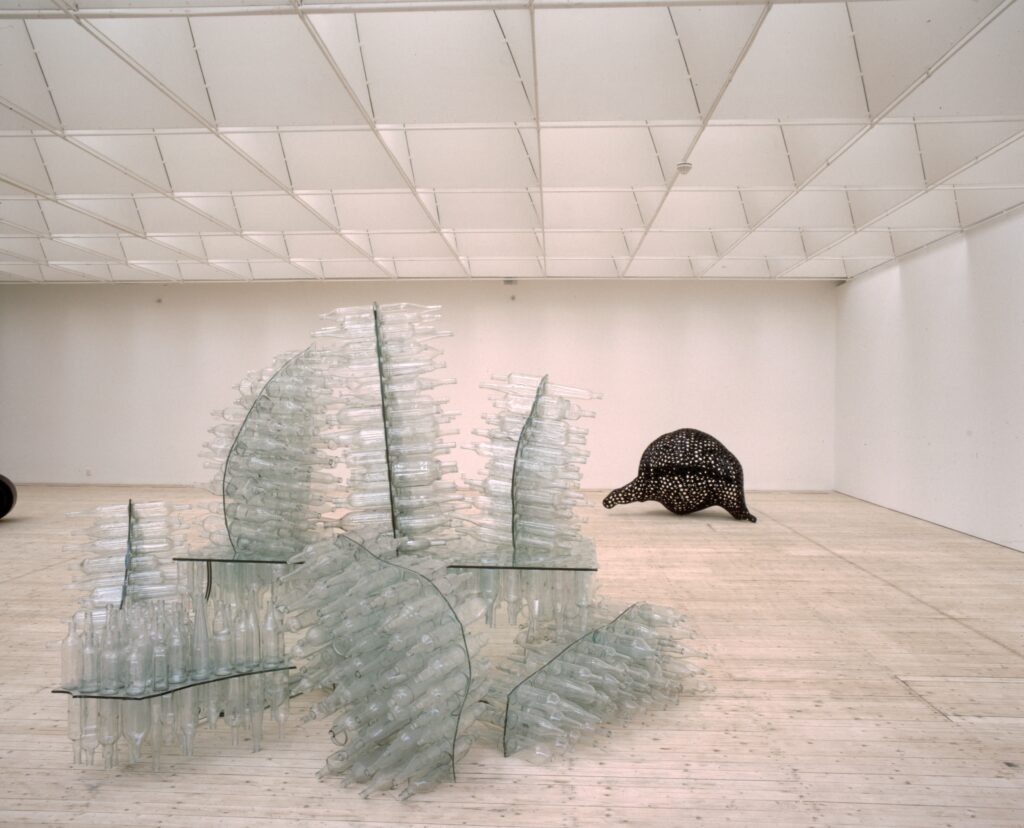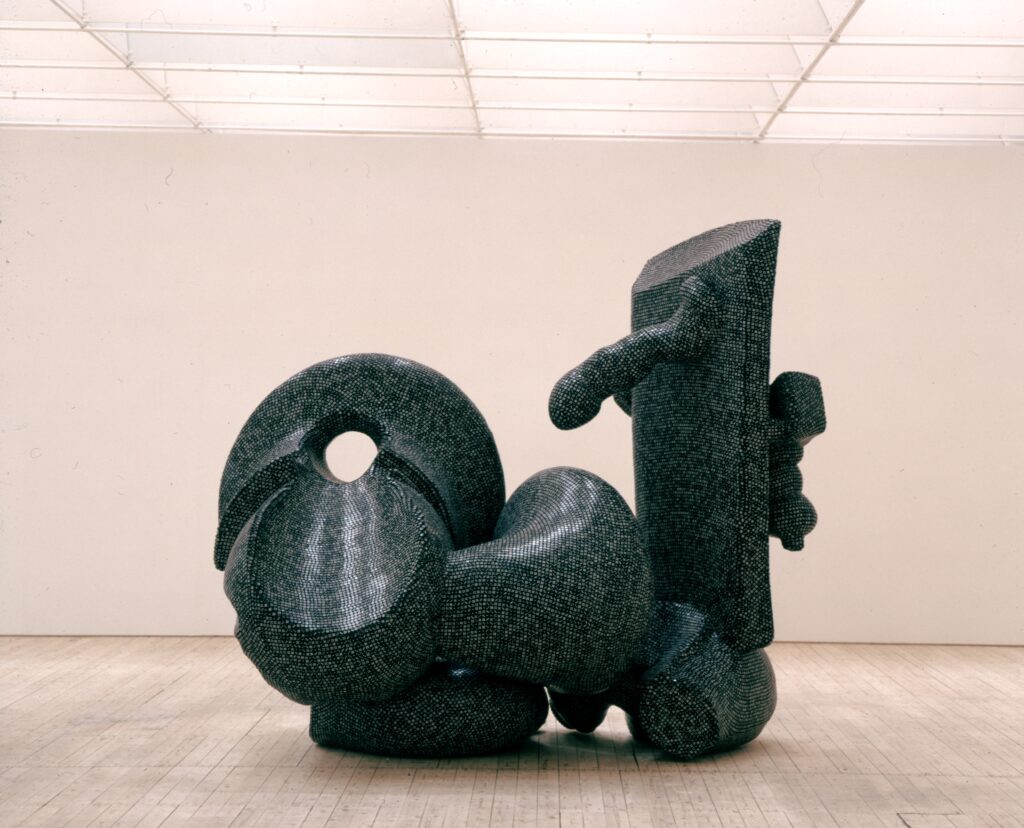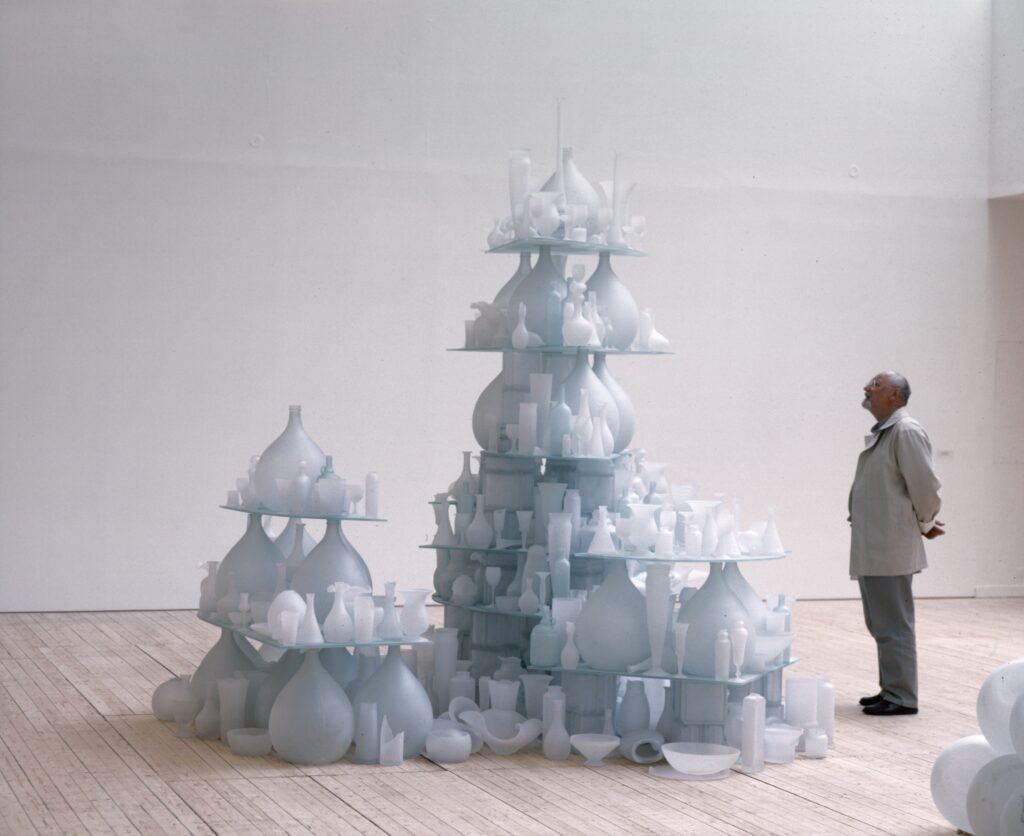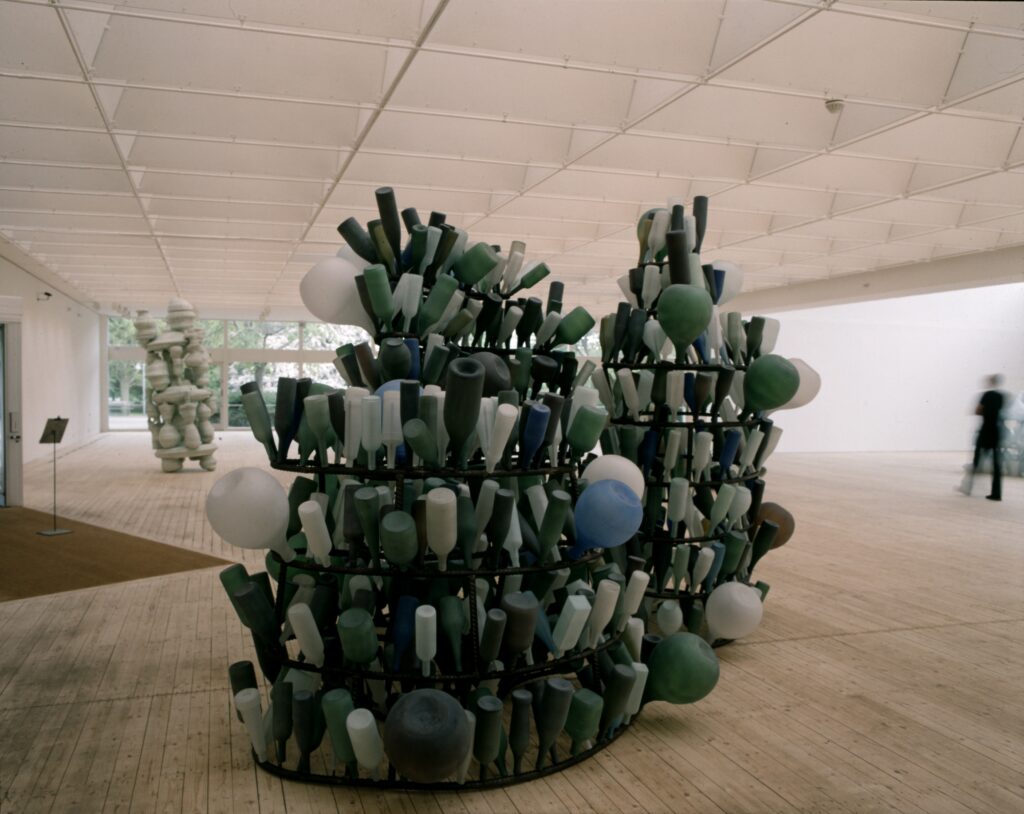
Tony Cragg
28.4 2001 – 19.8 2001
In the spring of 2001, Malmö Konsthall presented a comprehensive exhibition of new works by the British sculptor Tony Cragg, one of the most internationally recognized artists of his generation. Born in Liverpool in 1949 and educated at art schools in England, Cragg had been working in Germany since 1977, living and working in Wuppertal as well as teaching at the Academy of Arts in Düsseldorf.
Tony Cragg’s artistic practice was characterized by a deep connection to the material. His sculptures were often grouped according to the materials he worked with—stone, clay, bronze, glass, and synthetic materials such as polystyrene as well as carbon and fiberglass. The properties of the material formed the starting point for his creation; the choice of material largely determined the sculpture’s form and the emotional expression it conveyed. Cragg himself emphasized the relationship between matter and thought: the words material and matter derive from the Latin mater—meaning mother—and it was from the material that ideas were born.
Around the year 1980, Cragg attracted significant attention with his sculptures and images created from found objects—fragments of furniture, household items, and plastic toys—which he arranged into recognizable forms on floors and walls.
The exhibition in Malmö also included a series of drawings that offered insight into his working process. Some served as working sketches, but above all, they showed how the sculptures emerged through the interaction between the demands of the material and the guiding idea.
The sculptures shown in Malmö were mainly from the past four years and were characterized by a new visual lightness and transparency. The works’ previous restless energy had softened; instead, a timeless playfulness emerged, further opening a dialogue between the artwork and the viewer.
Tony Cragg described his sculptures as “invented realities, entirely dependent on and shaped by aesthetic decisions.” At the same time, he believed that the material “finds itself in a new form,” and that the artist in turn “experiences himself with new content and new meaning.” The exhibition offered the audience an opportunity to take part in this journey—to experience new thoughts, feelings, and associations through the sculpture’s form and presence.



